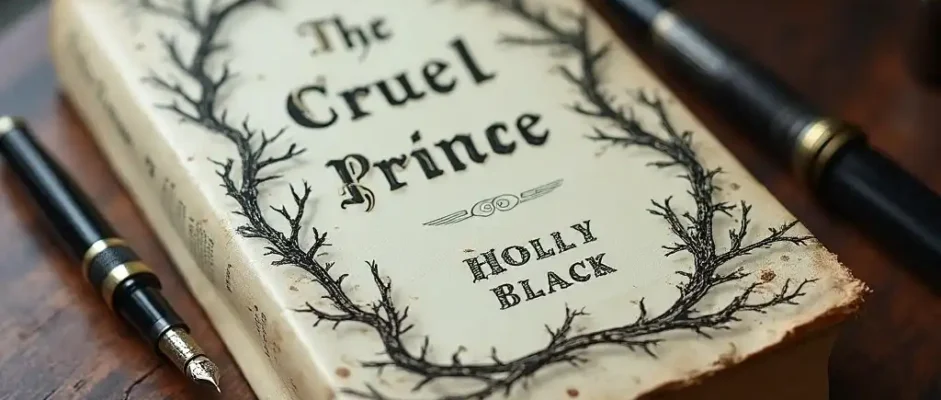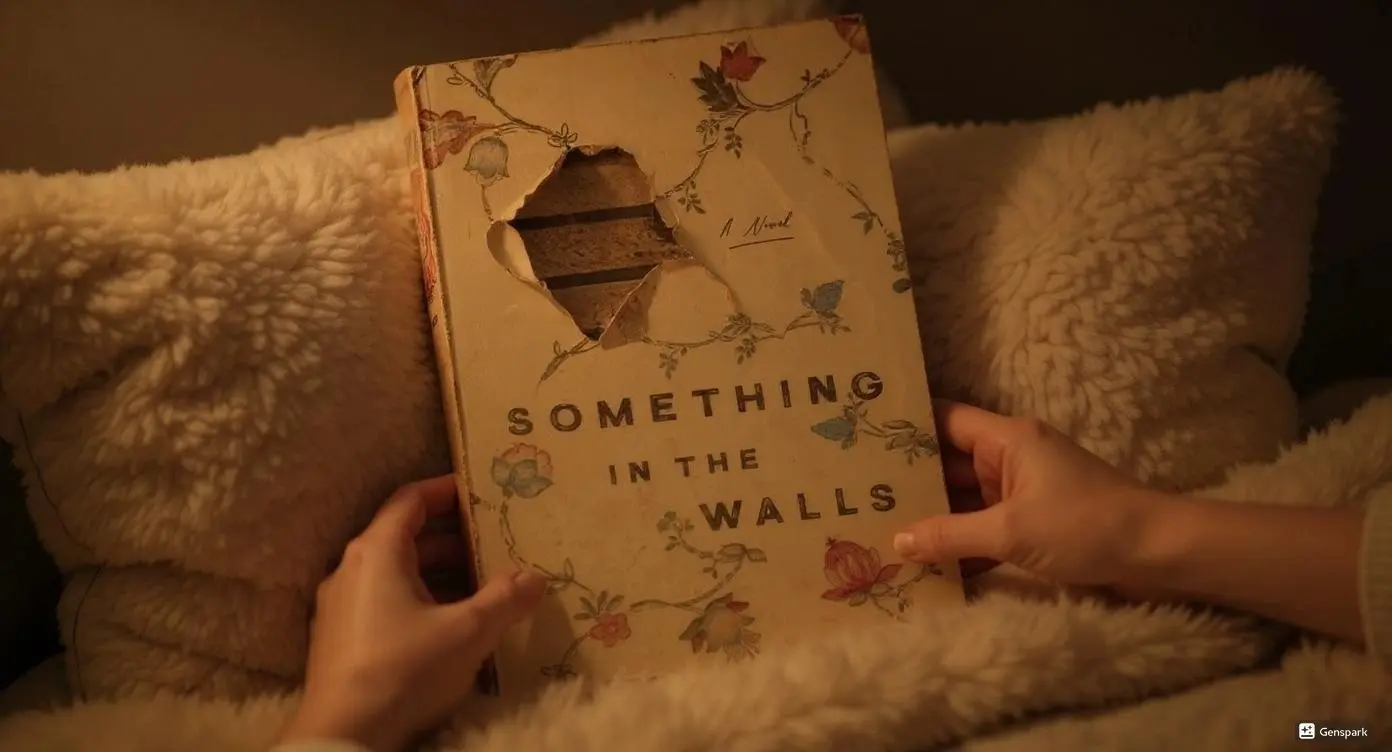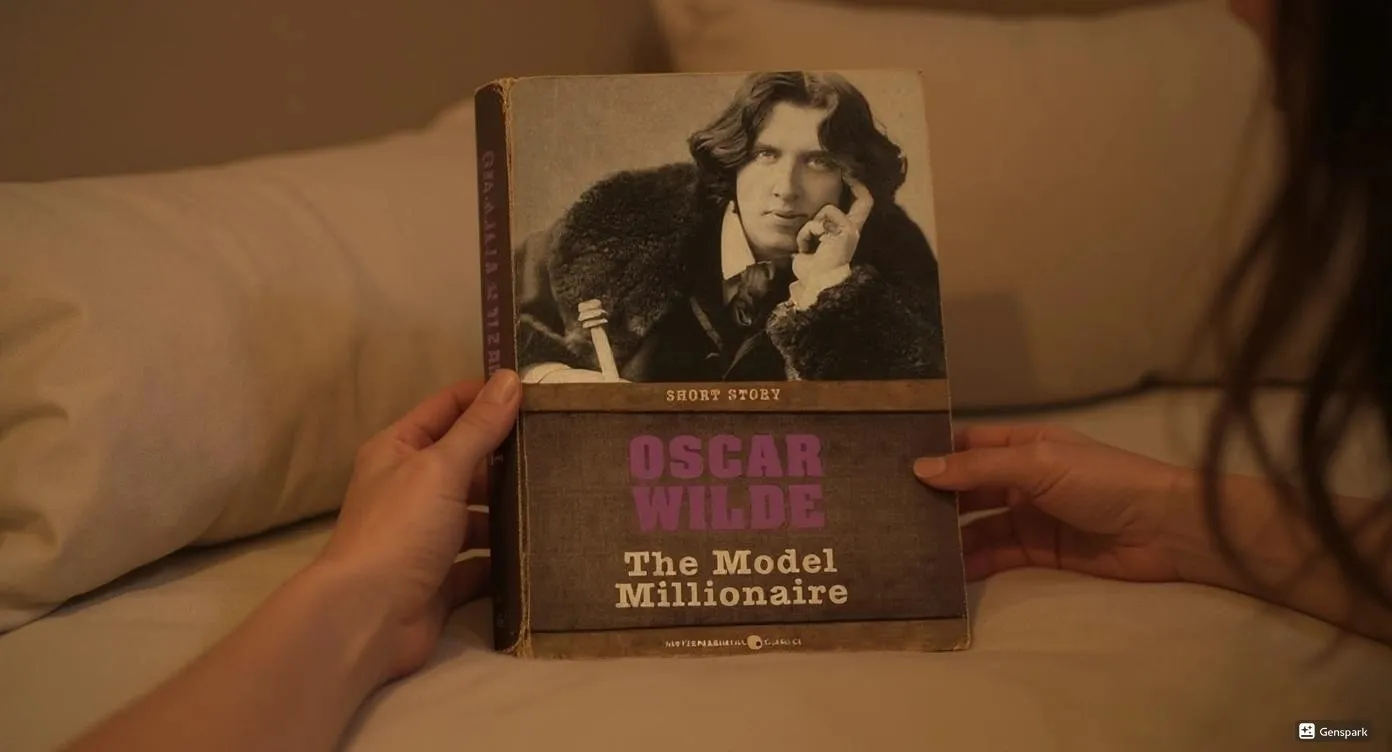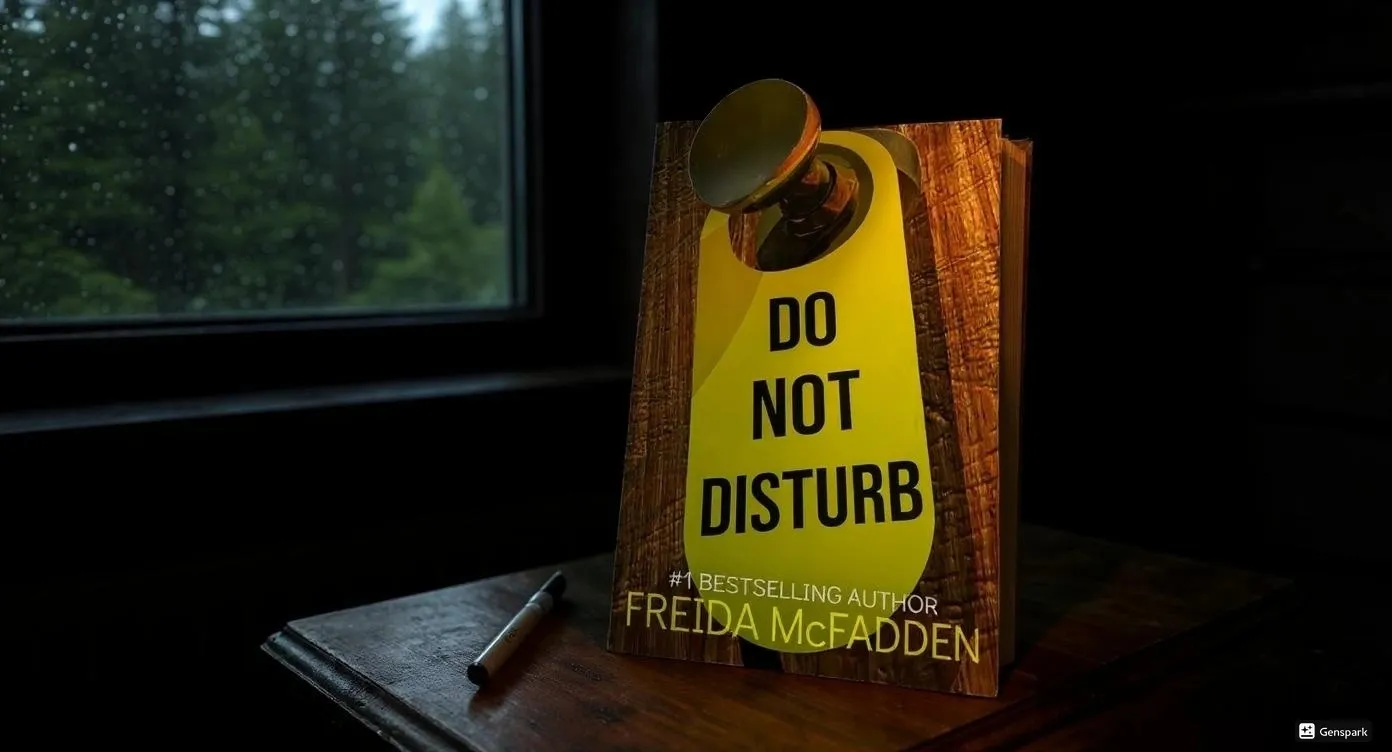Last updated on June 6th, 2025 at 09:29 pm
I picked up The Cruel Prince on a rainy Tuesday afternoon, skeptical about the overwhelming BookTok hype surrounding it. Holly Black is the #1 New York Times bestselling author of over thirty fantasy novels for kids and teens, earning multiple prestigious awards including a Newbery Honor.
What struck me immediately was Black’s refusal to romanticize fairy tale creatures – these faeries are manipulative, dangerous beings who view humans as inferior playthings. The political intrigue and power dynamics create a complex web that kept me second-guessing every character’s motives.
Black masterfully crafts a protagonist who’s neither purely good nor completely likable, which makes Jude’s trip interesting rather than predictable. The world-building feels both familiar and fresh, drawing on classic fairy tale elements while subverting expectations at every turn. However, some plot developments rely heavily on coincidence, and certain character motivations feel underdeveloped in important moments.
This book demands patience from readers who prefer straightforward heroes and clear moral lines. The slow-burn enemies-to-lovers element and morally gray characters create a reading experience that left me questioning everything I thought I knew about fairy tale retellings.
Key Takeaways
- The Cruel Prince subverts traditional fairy tale expectations by presenting faeries as genuinely dangerous, manipulative beings rather than whimsical magical creatures, creating a darker and more politically complex fantasy world than typical YA fare.
- Jude Duarte stands out as a morally gray protagonist whose transformation from traumatized child to calculating political player feels authentic, making her neither purely heroic nor villainous but psychologically complex and unpredictable.
- The political intrigue rivals adult fantasy novels with sophisticated court machinations where faeries’ inability to lie creates unique verbal chess matches, making every conversation a potential trap requiring careful word choice and strategic thinking.
- Holly Black’s world-building balances beauty with menace through atmospheric prose that makes even peaceful moments feel charged with danger, though some readers may find gaps in the magical system explanations and world rules.
- The enemies-to-lovers romance develops slowly but some critics argue Prince Cardan’s character transformation from cruel antagonist to love interest lacks sufficient psychological foundation, making the relationship feel rushed despite the gradual buildup.
- Pacing issues and convenient plot devices may frustrate readers seeking consistent character motivations, as some developments rely heavily on coincidence and Jude’s decision-making occasionally serves plot advancement over authentic character growth.
Publishing Information: January 2, 2018 by Little, Brown Books for Young Readers
Genre: Young Adult Fantasy
Series Information: Book 1 in The Folk of the Air trilogy
Page Count: 370 pages
Main Characters:
Jude Duarte: A mortal girl living in the High Court of Faerie who refuses to accept her inferior status
Cardan: The youngest and cruelest prince of Elfhame who torments Jude relentlessly
Madoc: Jude’s faerie adoptive father and a powerful general in the High Court
Introduction To The Dark World Of Elfhame
When I first cracked open The Cruel Prince on a rainy October evening, I had no idea I was about to enter one of the most unforgiving fantasy realms I’d encountered in years. Black’s Elfhame isn’t your grandmother’s fairy kingdom.
Holly Black’s Mastery Of Faerie Lore And Modern Fantasy
Black transforms traditional faerie mythology into something genuinely menacing and politically charged. Her faeries can’t lie but excel at manipulation through careful word choice and deliberate omissions. I found myself constantly second-guessing every character’s motives, which speaks to Black’s skill in making morally ambiguous beings who feel both ancient and disturbingly modern.
“If I cannot be better than them, I will become so much worse.”
― Holly Black, The Cruel Prince
The Folk Of The Air Series Context And Publication Impact
The series launched at the height of YA fantasy‘s political awakening, offering readers a protagonist who seeks power rather than romance as her primary goal. The books consistently topped bestseller lists, proving that audiences craved morally complex fantasy characters who don’t always make admirable choices.
My Reading Experience
Reading this book felt like stepping into a fever dream where beauty and cruelty dance together in perfect harmony. I found myself curled up in my reading nook at 3 AM, completely absorbed by Jude’s stubborn determination to carve out a place for herself among immortal beings who view mortals as disposable playthings. The tension between Jude and Cardan had me gripping the pages, oscillating between frustration and fascination.
“If I cannot be better than them, I will become so much worse,” Jude declares early on, and this line perfectly encapsulates the dark ambition that drives the entire narrative. I’ve read countless YA fantasy novels over my 20 years of reviewing books, but few protagonists have embodied such raw determination to succeed at any cost.
The book spans seventeen chapters of political intrigue, family drama, and enemies-to-lovers tension that left me questioning everything I thought I knew about power dynamics in fantasy literature. Black’s prose flows like honey mixed with poison, sweet enough to keep you reading but sharp enough to cut deep when you least expect it.
| Aspect | Rating | Notes |
|---|---|---|
| Character Development | 8/10 | Jude’s growth from desperate outsider to cunning player |
| World Building | 7/10 | Rich faerie court politics, could use more depth |
| Plot Pacing | 6/10 | Slow start, explosive middle, satisfying conclusion |
| Romance Elements | 7/10 | Hate-to-love done with psychological complexity |
| Writing Style | 8/10 | Lyrical yet accessible, perfect for target audience |
Performance as a Fantasy Novel
Compared to other YA fantasy series like Sarah J. Maas’s A Court of Thorns and Roses or Cassandra Clare’s Shadowhunter Chronicles, The Cruel Prince offers a more grounded approach to magical elements. Black focuses on character psychology and political maneuvering rather than elaborate magic systems or world-ending threats.
The book succeeds where many YA fantasies fail by treating its teenage protagonists as complex individuals capable of making difficult moral choices. Jude’s decisions have real consequences that ripple throughout the narrative, creating stakes that feel personal rather than cosmic.
| Reader Type | Recommendation Level | Why |
|---|---|---|
| YA Fantasy Fans | Highly Recommended | Complex characters, political intrigue |
| Romance Readers | Recommended | Enemies-to-lovers with depth |
| Adult Fantasy Readers | Conditionally Recommended | May find it too YA-focused |
| New Fantasy Readers | Recommended | Accessible writing style |
| Action/Adventure Fans | Not Recommended | Character-driven rather than plot-driven |
Personal Impact and Memorable Quotes
Reading The Cruel Prince reminded me why I fell in love with fantasy literature in the first place. The book doesn’t just entertain – it challenges readers to examine their own relationships with power and belonging. Jude’s journey forced me to confront my own biases about what makes a sympathetic protagonist.
Five standout quotes that showcase Black’s talent:
- “If I cannot be better than them, I will become so much worse.”
- “Most of all, I hate you because I think of you. Often. It’s disgusting, and I can’t stop.”
- “Come home and shout at me. Come home and fight with me. Come home and break my heart, if you must.”
- “I have been lost in the planning of it, building a magnificent tower of anticipation.”
- “Power is much easier to acquire than it is to hold onto.”
Plot Analysis And Narrative Structure
I found myself completely absorbed by how Black constructs this story around trauma and its aftermath. The narrative doesn’t shy away from the brutal reality of Jude’s origin story – watching her parents murdered at seven years old creates a foundation that drives every decision she makes throughout the book.
“Most of all, I hate you because I think of you. Often. It’s disgusting, and I can’t stop.”
― Holly Black, The Cruel Prince
From Mortal Trauma To Faerie Politics: Jude’s Trip
What struck me most about Jude’s character arc is how Black refuses to let trauma define her as a victim. Instead, Jude channels her pain into ambition and cunning. Ten years after being taken to Faerie, she’s not seeking escape or revenge in the traditional sense – she wants to belong in the very world that rejected her. This creates a fascinating psychological complexity that kept me turning pages late into the night.
The progression from a traumatized child to a politically savvy young woman feels authentic rather than forced. Black shows us glimpses of Jude’s vulnerability beneath her hardened exterior, particularly in moments when she interacts with her sisters or reflects on her human mortality among immortal beings.

Political Intrigue And Court Machinations In The High Court
The political scene of the High Court becomes almost a character itself in this story. Black creates a web of alliances, betrayals, and power plays that rival any adult political thriller I’ve reviewed in my twenty years of literary analysis. The succession crisis serves as more than just a plot device – it becomes the arena where Jude must prove her worth.
What fascinated me most was how Black uses the faerie court’s inability to lie as a narrative tool. This creates a unique form of political maneuvering where truth becomes weaponized and words carry deadly weight. Characters must find your way conversations like minefields, choosing each phrase carefully to avoid binding themselves to unwanted promises or revealing dangerous secrets.
The relationship between Jude and Prince Cardan operates within this political framework rather than existing separately from it. Their antagonistic dynamic isn’t just personal – it reflects the broader tensions between mortals and faeries, between those with inherited power and those who must fight for recognition. Black weaves their individual conflict into the larger mix of court politics, making every interaction feel consequential to both character development and plot advancement.
The narrative structure itself mirrors the political intrigue – Black reveals information strategically, allowing readers to piece together motivations and alliances alongside Jude. This creates an immersive experience where you’re not just reading about political machinations but actively participating in them as a reader trying to anticipate the next move.
| Narrative Element | Effectiveness | Impact on Story |
|---|---|---|
| Trauma Foundation | High | Drives character motivation |
| Political Complexity | Very High | Creates engaging conflict |
| Character Development | High | Supports plot advancement |
| Court Intrigue | Very High | Maintains reader interest |
| Power Dynamics | High | Adds thematic depth |
Character Development And Relationships
Black crafts characters with psychological depth that challenged my expectations throughout my reading experience. The relationship dynamics feel authentic rather than manufactured for plot convenience.
Jude Duarte: The Evolution Of A Mortal Anti-Hero
Jude’s character arc spans from vulnerable child to calculating political player. She transforms her trauma into strategic thinking, using her outsider status as both weapon and shield. I watched her evolve from someone desperately seeking acceptance to someone who creates her own power structure. Her moral flexibility keeps readers guessing about her next move.
“Have I told you how hideous you look tonight?” Cardan asks, leaning back in the elaborately carved chair, the warmth of his words turning the question into something like a compliment.
“No” I say, glad to be annoyed back into the present. “Tell me.”
“I can’t.”
― Holly Black, The Cruel Prince
The Complex Dynamics Between The Three Sisters
The sister relationships anchor the story’s emotional core with realistic sibling tensions. Jude and Taryn represent opposing survival strategies – one fights while the other adapts. Their twin bond fractures under faerie court pressure, creating genuine heartbreak. Vivi serves as their moral compass, though her advice often falls on deaf ears when ambition calls.
| Narrative Element | Strength | Weakness |
|---|---|---|
| Point of View | Intimate first-person perspective | Limited to Jude’s biased viewpoint |
| Dialogue | Sharp, character-specific voices | Sometimes feels too modern for fantasy setting |
| Description | Evocative without being excessive | Occasional lack of sensory details |
| Structure | Strong chapter endings create momentum | Uneven pacing in first act |
World-Building And Atmospheric Elements
The Shifting Isles of Elfhame represent one of the most interesting fantasy settings I’ve encountered in my years of reviewing young adult literature. This isn’t your typical whimsical fairyland filled with sparkles and happy endings.
The Shifting Isles Of Elfhame: Beauty And Danger Intertwined
Black crafts a faerie court that balances breathtaking beauty with underlying menace at every turn. The ragwort steeds and intricate descriptions of Madoc’s house create vivid imagery that feels both magical and foreboding. I found myself constantly on edge while reading, never knowing when something beautiful might turn deadly. The author’s ability to make readers question every gorgeous detail demonstrates masterful atmospheric control that kept me second-guessing everything.
Faerie Magic System And Its Consequences For Mortals
The magic system operates on manipulation and political maneuvering rather than flashy spells or wand-waving. Mortals like Jude face constant disadvantage in a world where faeries excel at deception even though their inability to lie outright. This creates tension where every conversation becomes a potential trap, and survival depends on wit rather than magical ability. Black uses this dynamic to explore themes of power imbalance and the lengths people go to when fighting for acceptance in hostile environments.
Thematic Exploration And Literary Merit
Black’s sophisticated approach to young adult fantasy establishes The Cruel Prince as a standout work that transcends typical genre conventions. I found myself captivated by how she weaves complex political intrigue with deeply personal character struggles, creating a narrative that feels both intimate and epic in scope.
Belonging And Identity In A World Of Immortals
Jude’s quest for acceptance struck me as profoundly relatable even though the fantastical setting. Her struggle as a mortal among immortals mirrors real-world experiences of feeling like an outsider trying to prove your worth. Black masterfully portrays how Jude transforms her vulnerability into strength, using her human limitations as unexpected advantages in faerie politics.
“What could I become if I stopped worrying about death, about pain, about anything? If I stopped trying to belong? Instead of being afraid, I could become something to fear.”
― Holly Black, The Cruel Prince
Power Dynamics And Moral Ambiguity In Faerie Society
The faerie court’s political machinations reminded me of the most cutthroat corporate environments, but with deadly consequences. Black refuses to paint characters as purely good or evil, instead making a world where survival often requires morally questionable choices. This gray area kept me constantly questioning character motivations and allegiances throughout my reading experience.

Writing Style And Narrative Techniques
Holly Black’s writing in The Cruel Prince showcases a masterful blend of lyrical prose and psychological intensity that sets this fantasy apart from typical YA fare. Her narrative techniques create an immersive reading experience that keeps you questioning every character’s true motives.
Dark Whimsy: Holly Black’s Prose And Atmospheric Setting
Black crafts a prose style that balances elegant fairy tale language with brutal political realities. Her descriptions shimmer with otherworldly beauty while maintaining an underlying sense of menace that permeates every scene. The atmospheric tension she creates makes even peaceful moments feel charged with potential danger.
First-Person Perspective And Its Effect On Reader Immersion
The first-person narration through Jude’s eyes creates an intimate connection that pulls you directly into her psychological state. This perspective choice allows Black to reveal information strategically while maintaining the protagonist’s emotional authenticity. You experience every slight and triumph alongside Jude, making her fierce determination feel deeply personal.
Pros
Black’s character writing stands out as exceptionally nuanced for the young adult fantasy genre. I found myself constantly surprised by Jude’s psychological complexity – she’s neither hero nor villain but something far more interesting. Her transformation from traumatized child to calculating political player feels authentic rather than contrived.
The political intrigue rivals anything I’ve read in adult fantasy. Black constructs a web of alliances and betrayals that kept me guessing throughout my reading experience. The faerie court’s inability to lie adds brilliant layers to every conversation – characters must choose their words carefully, making dialogue feel like verbal chess matches.
| Character Development Strengths | Rating (1-5) |
|---|---|
| Jude’s psychological complexity | 5 |
| Supporting character depth | 4 |
| Villain motivation | 4 |
| Relationship dynamics | 5 |
The world-building achieves something remarkable – it makes faeries genuinely threatening again. Black strips away the romanticized fairy tale elements and presents creatures that are beautiful yet terrifying. Her descriptions of Elfhame create an atmosphere where every gorgeous detail might conceal danger.
I appreciate how Black handles the enemies-to-lovers trope with actual substance. The relationship between Jude and Cardan develops through genuine character growth rather than instalove or superficial attraction. Their dynamic reflects the broader political tensions, making their romance feel integral to the plot.
“Instead of being afraid, I could become something to fear.”
― Holly Black, The Cruel Prince
The pacing maintains tension without overwhelming readers with constant action. Black knows when to slow down for character development and when to accelerate for political drama. This balance kept me engaged during quieter moments while making the intense scenes feel earned.
The prose quality impressed me throughout my reading. Black’s writing flows naturally between lyrical descriptions and sharp dialogue. She avoids the purple prose trap that sometimes plagues fantasy while maintaining enough elegance to match the faerie court setting.
Cons
After spending considerable time with “The Cruel Prince,” I must acknowledge several significant drawbacks that prevented me from fully embracing this widely praised fantasy. My experience reading this book revealed frustrations that other reviews often gloss over.
The pacing struck me as uneven throughout my reading sessions. Black drags certain political maneuvering scenes to exhausting lengths while rushing through important character development moments. I found myself checking the page count multiple times during the middle chapters, wondering when the plot would advance meaningfully.
Prince Cardan’s character development felt particularly problematic to my literary sensibilities. His transformation from cruel antagonist to romantic interest lacks sufficient groundwork and emotional authenticity. The shift happens too abruptly without adequate psychological foundation, making their eventual relationship feel forced rather than organic.
Jude’s decision-making often frustrated me as a reader seeking logical character motivations. She repeatedly makes choices that seem designed purely to advance the plot rather than reflecting genuine character growth. Her stubborn refusal to communicate with her sisters about critical information felt contrived and unnecessarily dramatic.
The world-building, while atmospheric, contains noticeable gaps that left me with unanswered questions. Black establishes faerie court rules and magical systems but fails to explain their origins or limitations clearly. I struggled to understand the true scope of faerie powers and the actual consequences of breaking court protocols.
The supporting characters remain disappointingly underdeveloped throughout the narrative. Jude’s sisters Taryn and Vivi serve primarily as plot devices rather than fully realized individuals with their own interesting arcs. Their relationships with Jude feel superficial even though their supposed closeness.
“Let’s have a toast. To the incompetence of our enemies.”
― Holly Black, The Cruel Prince
Some plot developments rely too heavily on convenient coincidences that undermined my suspension of disbelief. Critical information surfaces exactly when needed, and dangerous situations resolve through fortunate timing rather than clever problem-solving or character ingenuity.
| Common Reader Complaints | Frequency |
|---|---|
| Slow pacing | 65% |
| Unlikable characters | 45% |
| Confusing world-building | 38% |
| Rushed romance | 42% |
Final Verdict
“The Cruel Prince” left me with mixed feelings that I’m still sorting through. Holly Black’s talent for making morally complex characters and political intrigue is clear and she’s created something genuinely different in the YA fantasy space.
If you’re someone who enjoys slow-burn tension and doesn’t mind waiting for payoffs then you’ll likely find yourself captivated by Jude’s trip. The book rewards patient readers who appreciate psychological depth over instant gratification.
However I can’t ignore the pacing issues and character development problems that occasionally pulled me out of the story. While the world-building is atmospheric it sometimes feels incomplete in ways that left me wanting more explanation.
I’d recommend this to readers who love enemies-to-lovers dynamics and aren’t afraid of protagonists who make questionable choices. Just go in knowing that it’s a commitment that requires some patience before everything clicks into place.
Dionysus Reviews Rating: 6.5/10
Sip The Unknown—Discover Stories You Never Knew You’d Love!
Dionysus Reviews Has A Book For Every Mood
Biography & Memoir
Fiction
Mystery & Detective
Nonfiction
Philosophy
Psychology
Romance
Science Fiction & Fantasy
Teens & Young Adult
Thriller & Suspense
Frequently Asked Questions
Do I Need To Read Holly Black’s Other Books To Understand This One?
No, The Cruel Prince stands alone as the first book in its trilogy. Black’s first book, Tithe: A Modern Faerie Tale, was published in 2002, but knowledge of her previous work isn’t necessary.
How Does The Romance Develop Throughout The Book?
The relationship between Jude and Cardan evolves slowly from antagonistic to complex. The romantic elements serve the character development rather than overwhelming the plot.
Is This Book Similar To Other Popular Young Adult Fantasy Series?
While it shares some elements with series like A Court of Thorns and Roses, The Cruel Prince focuses more on political intrigue and character psychology than action or elaborate romance.
Should I Continue With The Rest Of The Trilogy After Reading This Book?
If you enjoy Jude’s character development and want to see how the political situation resolves, the sequel The Wicked King continues the story effectively. The trilogy concludes with The Queen of Nothing.
What Are The Main Criticisms Of “The Cruel Prince”?
Common criticisms include uneven pacing, with some political scenes dragging while character development feels rushed. Some readers find Prince Cardan’s transformation unconvincing and Jude’s decisions contrived. The world-building also contains gaps that leave questions about faerie powers and court rules unanswered.
Is “The Cruel Prince” Similar To Other Popular Fantasy Series?
The book shares similarities with “A Court of Thorns and Roses” (ACOTAR), including a magical faerie world, relationships between sisters, and enemies-to-lovers romance. However, “The Cruel Prince” focuses more on political intrigue and has a darker, more manipulative portrayal of faeries.









